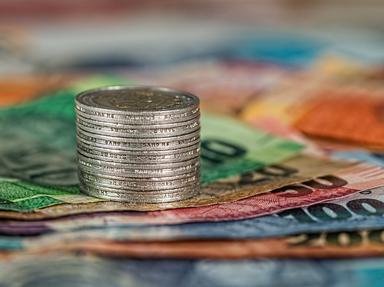Quiz Answer Key and Fun Facts
1. What is numismatics?
2. The world's first coins are generally thought to have been made at a place called what?
3. Joachimsthal was a town in Bohemia (now the Czech Republic) whose name gave rise to what numismatic word?
4. A coin collector is most likely to add which of the following to his collection?
5. A coin struck specifically for collectors, featuring extra-sharp details and a glossy mirror-like background, is called a what?
6. What is seigniorage?
7. As famously seen in Hungary and Zimbabwe, the excessive printing of paper money can trigger what?
8. What is the numeric range of values that a coin professionally graded by an American grading service can have?
9. What was the only country that ever issued platinum coins as a regular circulating currency? Today, it is the world's second largest producer of platinum.
10. Money generally has three different types of values. Which of these is NOT one of those three types?
Source: Author
nautilator
This quiz was reviewed by FunTrivia editor
ozzz2002 before going online.
Any errors found in FunTrivia content are routinely corrected through our feedback system.


